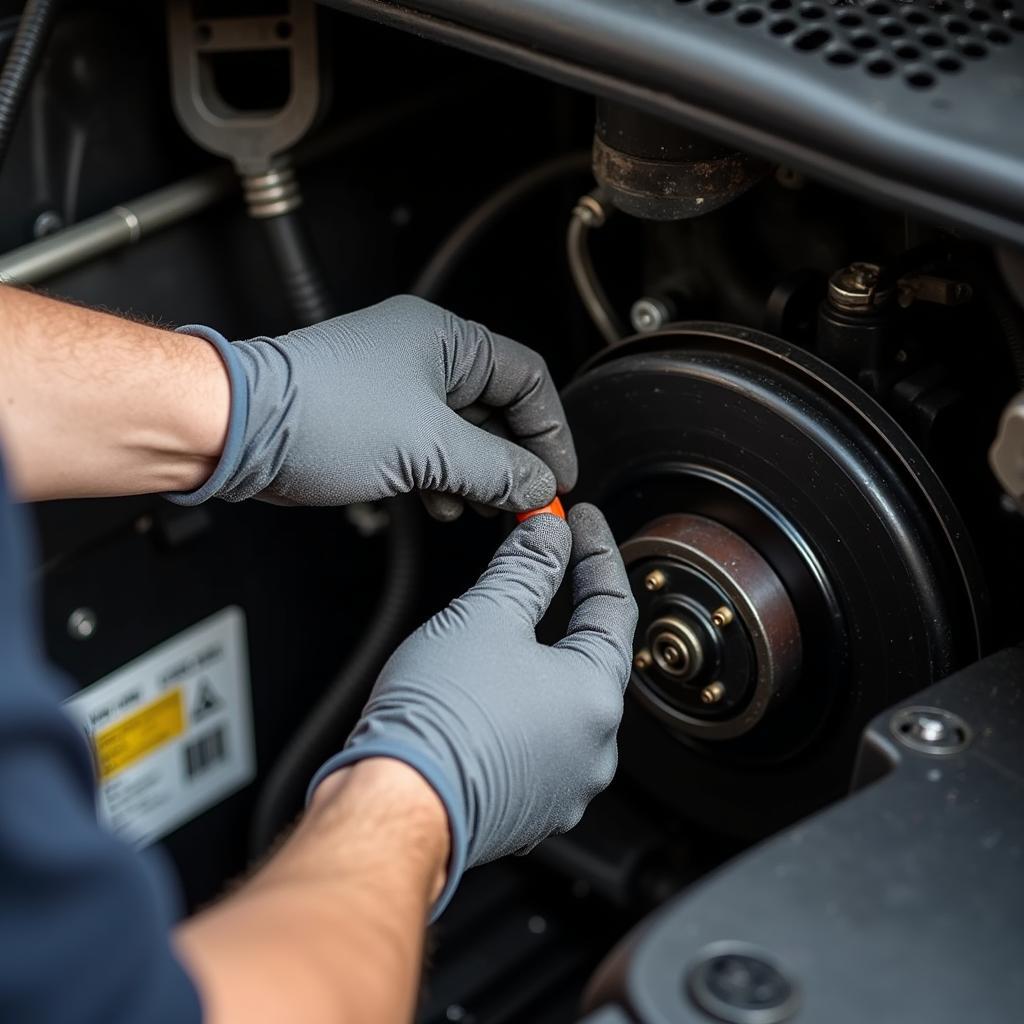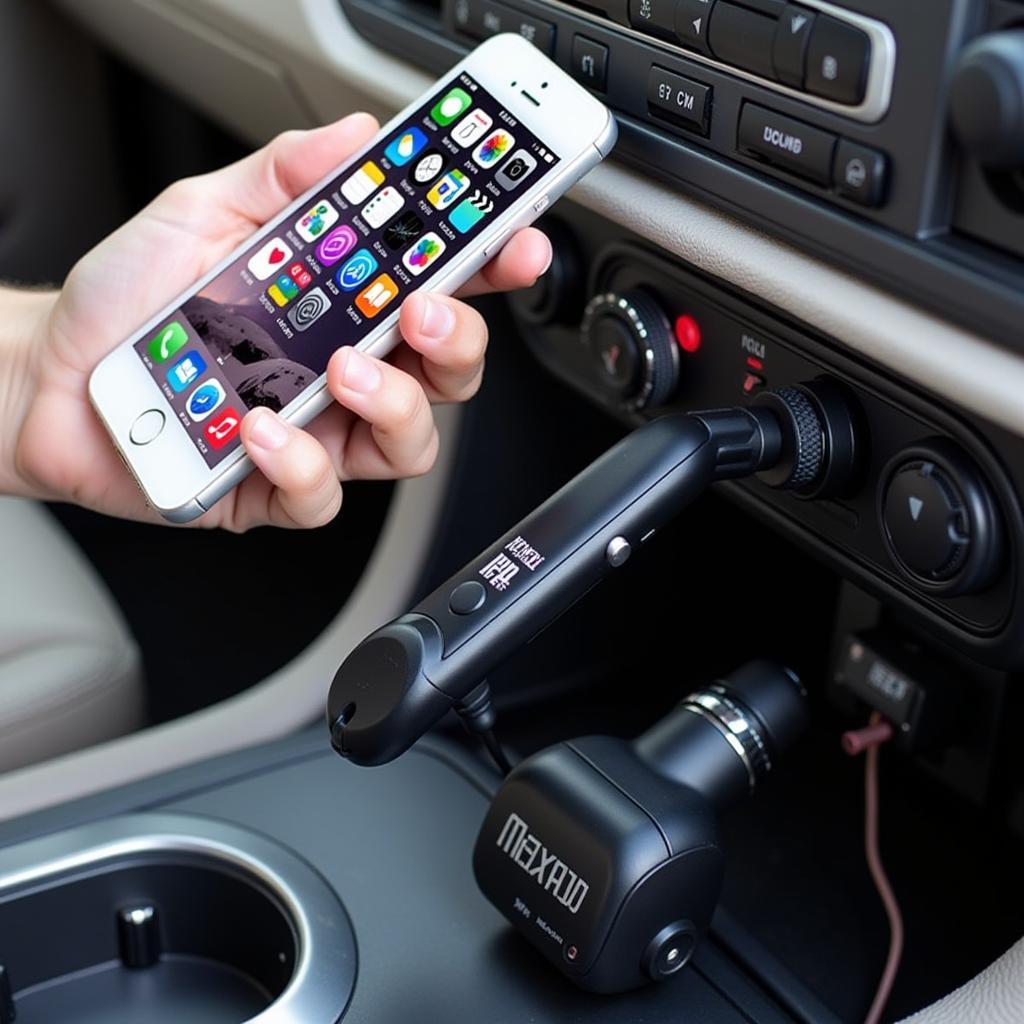A glowing brake warning light on your dashboard can be unsettling. It’s a clear signal that something isn’t right with your car’s braking system, demanding your immediate attention. While it can indicate a range of issues from minor to serious, understanding the potential causes and knowing how to respond can save you from costly repairs and ensure your safety on the road.
 Brake Warning Light Illuminated on Car Dashboard
Brake Warning Light Illuminated on Car Dashboard
Common Reasons Your Brake Warning Light is On
Several factors can trigger the brake warning light on your dashboard. Here’s a breakdown of the most common culprits:
-
Low Brake Fluid: This is one of the most frequent reasons for the warning light. Brake fluid is the lifeblood of your car’s hydraulic braking system. As brake pads wear down, the brake fluid level naturally drops. However, a sudden or significant decrease in brake fluid could indicate a leak, which requires immediate inspection and repair.
-
Worn Brake Pads: Brake pads are designed to wear down over time. Most vehicles have a built-in sensor that turns on the warning light when the brake pads reach a certain level of wear, indicating it’s time for a replacement.
-
Faulty Brake Light Switch: This switch is responsible for activating your brake lights when you press the brake pedal. If it malfunctions, it can also trigger the brake warning light.
-
ABS Issue: If there’s a problem with your Anti-lock Braking System (ABS), such as a faulty sensor or control module, the brake warning light might illuminate.
-
Parking Brake Engaged: It might seem obvious, but sometimes the simplest explanation is the right one. If you’ve accidentally left your parking brake partially engaged, the warning light will likely stay on.
 Mechanic Checking Brake Fluid Level in Car
Mechanic Checking Brake Fluid Level in Car
What to Do When Your Brake Warning Light Turns On
“Ignoring a brake warning light is like ignoring a flashing “danger” sign,” says veteran mechanic John Miller. “It’s crucial to address the issue immediately to prevent potential accidents and costly repairs.”
Here are the steps you should take:
-
Safely Pull Over: If the brake warning light comes on while driving, find a safe place to pull over as soon as possible.
-
Check Your Parking Brake: Ensure your parking brake is fully disengaged. If the light turns off, you’re good to go. If not, proceed to the next step.
-
Check Your Brake Fluid Level: Locate the brake fluid reservoir under the hood (refer to your owner’s manual for its location). Carefully check the fluid level. If it’s low, adding brake fluid might temporarily solve the problem, but it’s crucial to get your car inspected for leaks.
-
Avoid Driving: If the brake fluid level is significantly low, you notice a leak, or the light remains on after checking the parking brake and fluid level, do not drive your car. Instead, call a tow truck and have your vehicle taken to a trusted mechanic.
Can I Drive with the Brake Warning Light On?
The short answer is: it depends. If the light comes on momentarily and then turns off, it could be a temporary glitch. However, if the light stays on, it indicates a potentially serious issue with your braking system, and driving is strongly discouraged.
Brake Warning Light: FAQs
Q: What does a flashing brake warning light mean?
A: A flashing brake warning light usually indicates a critical issue with the braking system, potentially related to the ABS. It’s crucial to stop driving immediately and have your car towed to a mechanic.
Q: How much does it cost to fix a brake warning light issue?
A: The cost can vary greatly depending on the underlying problem. A simple brake fluid top-up or brake pad replacement will be much less expensive than fixing a brake line leak or replacing a faulty ABS component.
Q: How often should brake fluid be replaced?
A: It’s generally recommended to have your brake fluid flushed and replaced every 2-3 years or as recommended by your car manufacturer.
Don’t Ignore the Warning
The brake warning light is a crucial safety feature in your car. By understanding its significance and taking prompt action when it illuminates, you can prevent accidents, save on costly repairs, and ensure your peace of mind while driving.


